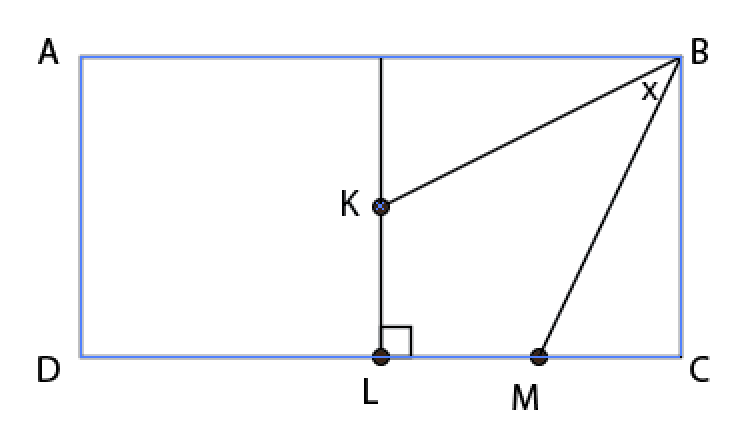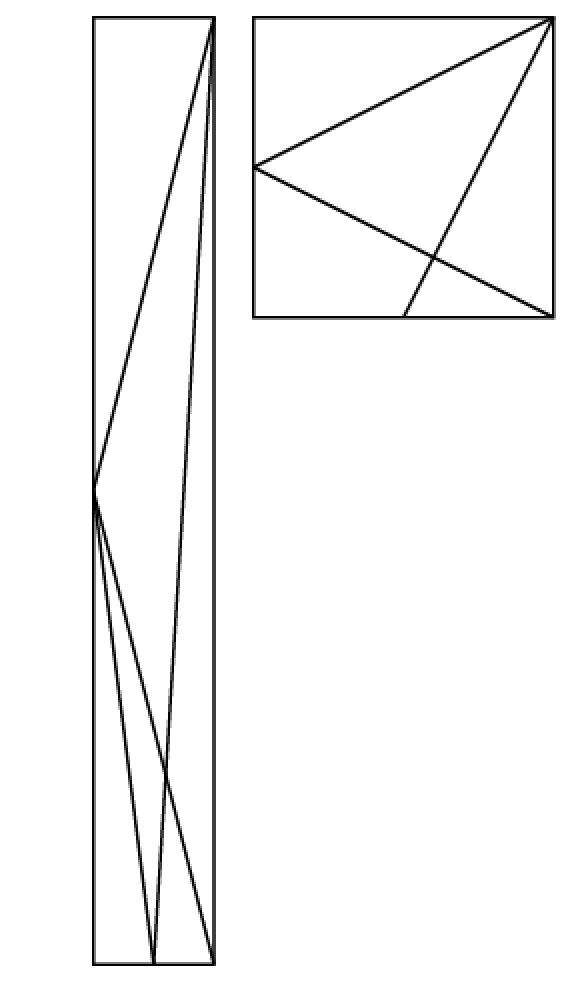GMAT Question of the Day – Data Sufficiency – Geometry
In the figure above ABCD is a rectangle and point K is the center of ABCD. What is the value of x?
(1) KB is equal to MB
(2) M is the midpoint of LC
[spoiler]C.[/spoiler]
GMAT Question of the Day Solution
One way to find the measure of angle x is to find the measures of its adjacent angles MBC and KBA. Because ABCD is a rectangle all three of those angles must sum to 90 degrees. Also notice that KB is half of the diagonal of the rectangle but don’t assume that this means that angle KBA is 45 degrees. In fact, there is no way to tell how the 90 degrees is divided between the 3 angles. You can prove this to yourself by distorting the shape. Another thing to think about: in GMAT Geometry questions with mixed shapes consider how you can add lines to create new connections. Notice that we can add a line at point K to create another right triangle.
You can also add the other diagonal KC.
Statement (1) Our shape can still change. Angle x will vary depending on the proportions of the rectangle. Try drawing different variations of the shape to prove this to yourself. You will see that as the rectangle gets short angle x must get more acute regardless of whether BK = BM. Insufficient.
Statement (2) This statement is also insufficient. This can be proven with trigonometry which is not necessary on the GMAT or by distorting the shape. When you change the proportions you can see x change.
Put Statement (1) and Statement (2) together and half of the rectangle becomes a square. Once you have square, symmetry is forced on all of the angles.




